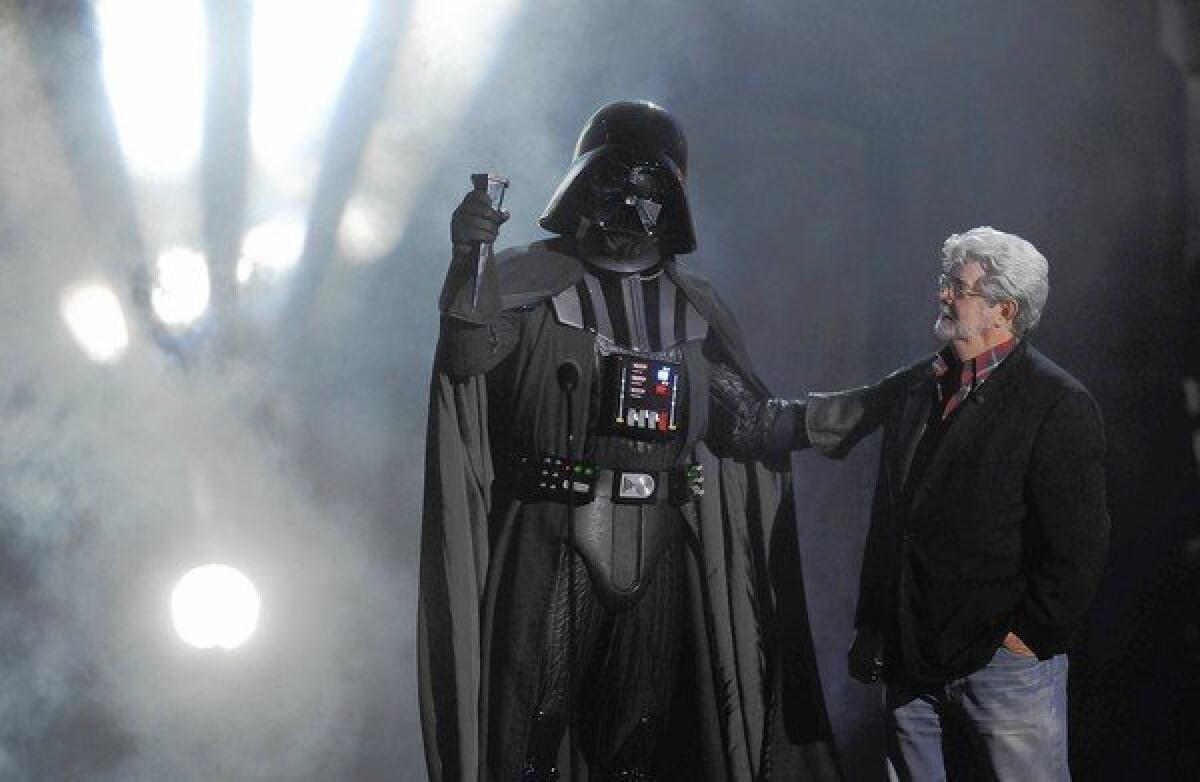Disney would acquire a visual effects firm with Lucasfilm deal

Walt Disney Co.âs $4.05-billion acquisition of Lucasfilm was driven by the desire to tap into the âStar Warsâ juggernaut.
But the surprise deal will also give Disney other noteworthy assets, including the pioneering visual effects company Industrial Light & Magic and Skywalker Sound.
ILM is considered one of the preeminent visual effects firms in the industry, known for its high-level work on the âStars Wars,â âIndiana Jonesâ and âJurassic Parkâ movies, the âPirates of the Caribbeanâ and âIron Manâ films and an upcoming âStar Trekâ film from J.J. Abrams.
âThey are certainly considered the grandfather of all visual effects companies,â said Eric Roth, executive director of the Visual Effects Society. âWill it give Disney a big competitive advantage? I donât know. Is it something that will bring further stability and a moving forward future to ILM? I suspect it will.â
ILM employs 800 people in San Francisco and 200 more at a studio in Singapore. In recent years, the Lucasfilm division has moved beyond providing post-production services to producing its own content, including its first animated feature film in 2011, âRango,â directed by Gore Verbinski and released by Paramount Pictures.
In a conference call with analysts Tuesday, Disney Chief Executive Bob Iger said Disney had no plans to change ILMâs operations.
VIDEO: Disney buys Lucasfilm - Mickey meet Darth Maul
âOur current thinking is that we would let it remain as is,â Iger said. âThey do great work. They do work for multiple studios. Itâs been a decent business for Lucasfilm and one we have every intention of staying in.â
Owning an in-house visual effects company could give Disney a leg up at a time when increasingly expensive visual effects are increasingly important to the success of movies. Visual effects can cost as much as $60 million on a big-budget movie.
âIt will lower the costs of making visual effects,â said Dave Rand, a senior visual effects supervisor who has worked on âTransformers: Dark of the Moonâ and the upcoming âLife of Pi.â âItâs far more efficient to have everything close to home and having everything under one roof rather than having to go to several locations to get their movie done.â
PHOTOS: Movie princess through the years
Despite the strong demand for their services, California effects houses have been squeezed by foreign rivals that benefit from tax credits and lower-cost labor.
In a sign of the times, ILM rival Digital Domainâs parent company recently filed for bankruptcy, prompting the sale of the Venice studio to Chinaâs Galloping Horse and Indiaâs Reliance MediaWorks.
Disney and other studios, however, have had a mixed track record in buying visual effects companies. Although Sony had success with the launch of Imageworks in 1992, Fox purchased visual effects shop VIFX in 1996 but sold it three years later to Rhythm & Hues.
FULL COVERAGE: The latest âStar Warsâ news
In 1996 Disney acquired Dream Quest Images, which later became the Secret Lab that worked on the digital film âDinosaur,â but it closed five years later.
âThere is some benefit to holding (ILM) but there are an incredible amount of costs associated with it,â said Scott Ross, a founder of Digital Domain and former general manager for ILM. âDisney has not had a good experience with visual effects companies.â
Despite the magnitude of the deal, investors seemed to barely react to the news Wednesday. Disney shares closed at $49.12, down 96 cents, or only 2%, which analyst Tony Wible of Janney Capital Markets said may be attributable to disappointed investors who hoped Disney would spend more money repurchasing stock than on new acquisitions.
Some analysts reacted positively, saying the deal could ultimately prove as successful as Disneyâs purchases of Pixar and Marvel.
âAs was the case for Disneyâs Pixar and Marvel acquisitions, although near-term financial returns will be difficult to justify, long-term strategic benefits may crystallize over time,â Anthony DiClemente of Barclays Equity Research wrote in a note.
Todd Juenger of Bernstein Research said Disney needs to find about $150 million of annual cost savings from Lucasfilm and generate $1.5 billion in worldwide box-office sales from each of the next three âStar Warsâ films to make the deal pay off. âNot heroic given the âStar Warsâ brand and Disneyâs unparalleled global consumer products network,â he wrote.
As part of the acquisition, Disney would also own Lucasfilmâs âIndiana Jonesâ franchise, but would have to work with Paramount Pictures on any film properties. That studio has distribution rights to the four âIndiana Jonesâ films already made and any future productions in all media. However Lucas controls any ancillary rights, such as consumer products.
Lucasfilm has also made several other movies that Disney will own once the purchase is complete, including Januaryâs big-screen story of the Tuskegee Airmen âRed Tails,â the 1994 comedy âRadioland Murdersâ and 1988âs fantasy adventure âWillow.â
20th Century Fox owns the rights to distribute the original 1977 âStar Warsâ far into the future, but will not control its five sequels after 2020. At that point, Disney would be able to release them on DVD, Blu-ray or digitally. Fox is also in line to re-release five more âStar Warsâ movies theatrically in 3-D after starting with âThe Phantom Menaceâ last February.
âStar Warsâ may also help Disneyâs troubled video game division, which could produce new âStar Warsâ related titles in the future.
Lucasfilmâs video game division LucasArts was once a major publisher, well known for creative, original games such as âThe Secret of Monkey Islandâ and âBattlehawks 1942.â Over time, the company focused more on âStar Warsâ games and was also wracked by frequent layoffs and executive turnover.
LucasArts is currently operating without a permanent president and has not made a new game since 2010âs poorly received âStar Wars: The Force Unleashed II.â This year it announced a new title in the works, âStar Wars: 1313,â but because that game is intended to carry dark themes and be rated M (the video game equivalent of R), it may not fit into Disneyâs intent to position âStar Warsâ as a family entertainment brand.
âLucasArts is just a machine that churns out âStar Warsâ related games now and audiences approach anything they do with a level of skepticism,â said games journalist Adam Sessler, a host of the G4 cable network program âX-Play.â
Times staff writer Joe Flint contributed to this report.
MORE
INTERACTIVE: TVs highest paid stars
PHOTOS: Hollywood back lot moments
More to Read
From the Oscars to the Emmys.
Get the Envelope newsletter for exclusive awards season coverage, behind-the-scenes stories from the Envelope podcast and columnist Glenn Whippâs must-read analysis.
You may occasionally receive promotional content from the Los Angeles Times.










